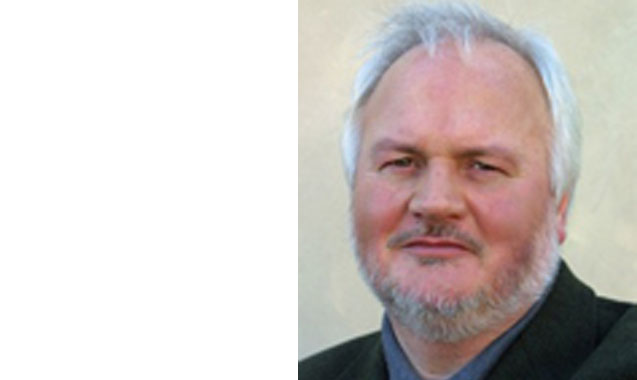The ever growing and changing Pope Francis
Massimo Faggioli’s review of the second edition ofPope Francis – Untying the Knots – The Struggle for the Soul of Catholicism(Photo: CNA)
Pope Francis: The Struggle for the Soul of Catholicism, Paul Vallely, Bloomsbury, 2015, 470 pp.
This is the only major biographical work on Pope Francis that has been substantially updated after its first edition.
Untying the Knots – The Struggle for the Soul of Catholicism adds nine new chapters, which constitute a thorough analysis of the first two years of the pontificate.
The most important is Chapter Six, “Exile in Cordoba”.
It represents, in my opinion, one of the keys to understanding the “mystery” of Jorge Mario Bergoglio, the man and the priest, and therefore to understanding his pontificate. It is clear to me that the turnaround of this Jesuit – who, in his fifties, took stock of his failures – has a parallel in the life of the young Angelo Giuseppe Roncalli and the future John XXIII’s embrace of the idea of the “medicine of mercy”.
The chapter that follows, “How Bergoglio Changed”, is one of the best analyses of the cultural and spiritual complexities of Bergoglio-Francis. Vallely accurately describes the deeply anti-ideological approach to the issues that been seen as so typical of this pope. Francis transcends the divide between a Catholic culture focused on social justice and a more spiritualized Catholicism that saw such political engagement in the period after the Second Vatican Council as a distortion of the nature of the Church.
But for all Bergoglio’s complexities and paradoxes, Vallely convincingly shows that there is a trajectory in his life and thought. He was not a liberation theologian, but as pope he clearly expresses a liberationist perspective. In this sense, as the pontificate continues to add new elements to the trajectory of the pope’s life, it is interesting to read Vallely’s analysis of how top clerics perceived Bergoglio in different ways at the conclave and at the beginning of the pontificate (especially Cardinals Mueller, Burke, Nichols, and Woelki).
This book is particularly valuable for its nuance. The chapters on Bergoglio during the dirty war in Argentina, on his handling of the sex abuse crisis at the Vatican and his approach to the role of women in the Church and in theology offer a healthy reminder. For all his conversion from the authoritarian Jesuit to the synodal pope, Francis has idiosyncrasies stemming from his background, formation, and culture as a cleric.
I disagree with Vallely’s judgment in only a few passages. For example, I would not say that Francis’ statements on contraception represent “ambiguity” (page 193). I think rather it is because the matter itself is complex that a pope finally decided to address it in a complex way. In this he points out that Catholicism is full of contradiction, like every Christian experience.
But what is even more typical of Catholicism is not the contradiction, but the paradoxes. In Francis’ case, the paradox of reconciling the validity of the overall message of Humanae Vitae on marriage and love with the very problematic (to say the least) reception in the Church of the passage on contraception. Francis is, in fact, the first pope that has gone through the reception of Humanae Vitae as a young priest.
Secondly, I do not think it is correct to affirm that Francis confirmed the Congregation for the Doctrine of the Faith’s criticism of the Leadership Conference of Women Religious (page 369). I think the dossier of the American sister was part of the complicated transition from Pope Benedict XVI to Pope Francis. In fact, in December 2014 Francis put an end to the whole investigation.
Finally, I believe it is unfair to say Francis’s view of women is that they are like “strawberries on the cake”. Along with that remark, which the he made in December 2014 during an address to the members of the International Theological Commission in December 2014, the pope also said quite clearly that women should not be seen that way and must have a more visible role in the Church (page 376).
The subtitle of Vallely’s new edition – the struggle for the soul of Catholicism – comes up explicitly two times in the book, according to my count. On page 264 the author talks about “a war for the soul of Catholicism” in reference to Francis’ critical speech to the Roman Curia in December 2014.
Then at then end of page 326 he reports on a comment made by an Downton Abbey kind of lady at a Cardinal Burke event in Chester, England: “This is a battle for the soul of the Church”.
Vallely’s inclusion of the subtitle concerning Pope Francis’ “ struggle” is part of this revised and expanded edition for a reason. The pontificate is meeting resistance from the establishment of the Church – much more than any recent predecessor on the chair of Peter.
The author’s story of Bergoglio is “a story of change” (page 412). The Church is also a story of change, and this book helps us understand the connection between the deep inner transformation of its current leader and the possibility of transformation of the Church.
Vatican City


 Follow
Follow
Comments are closed.